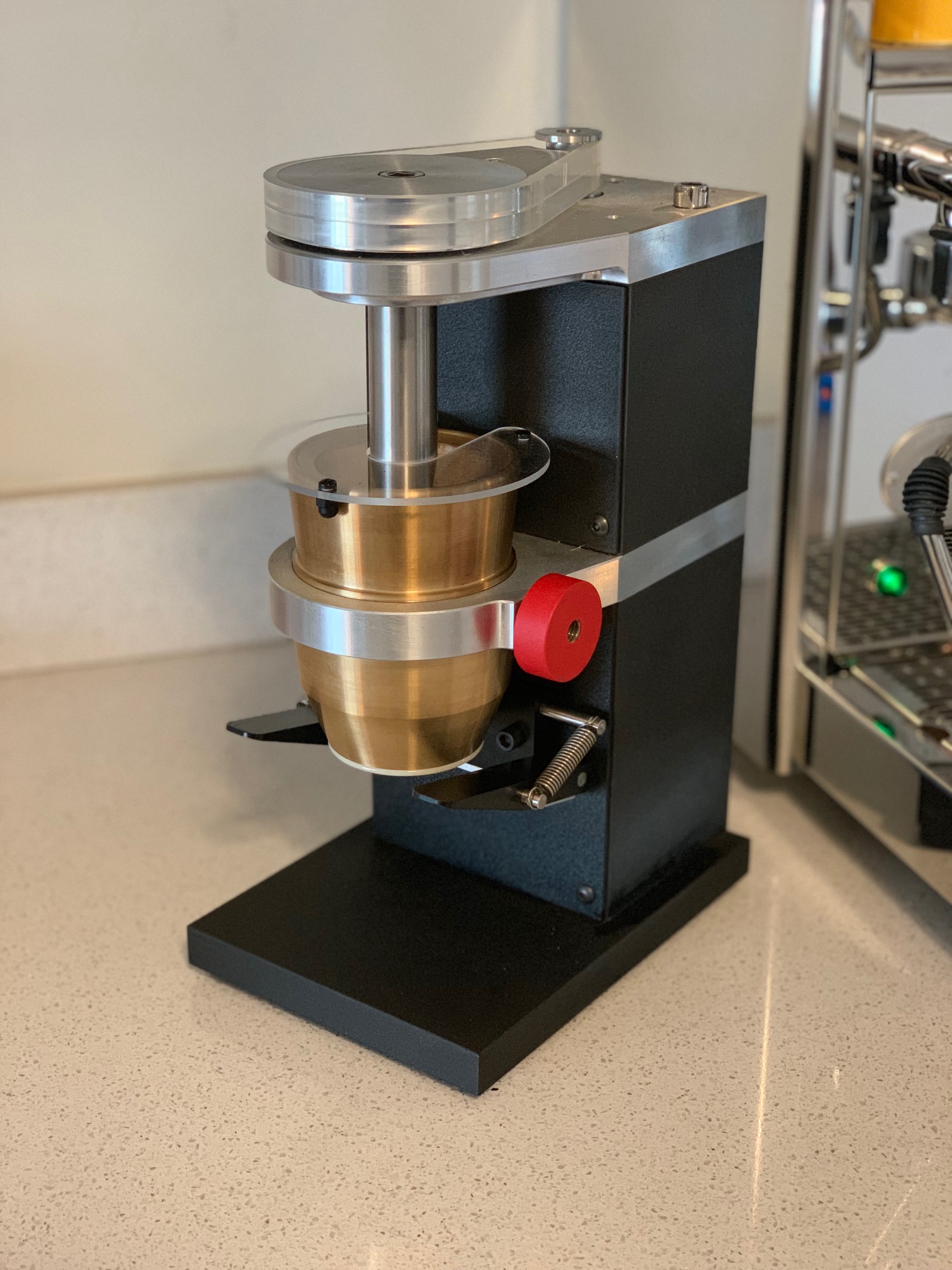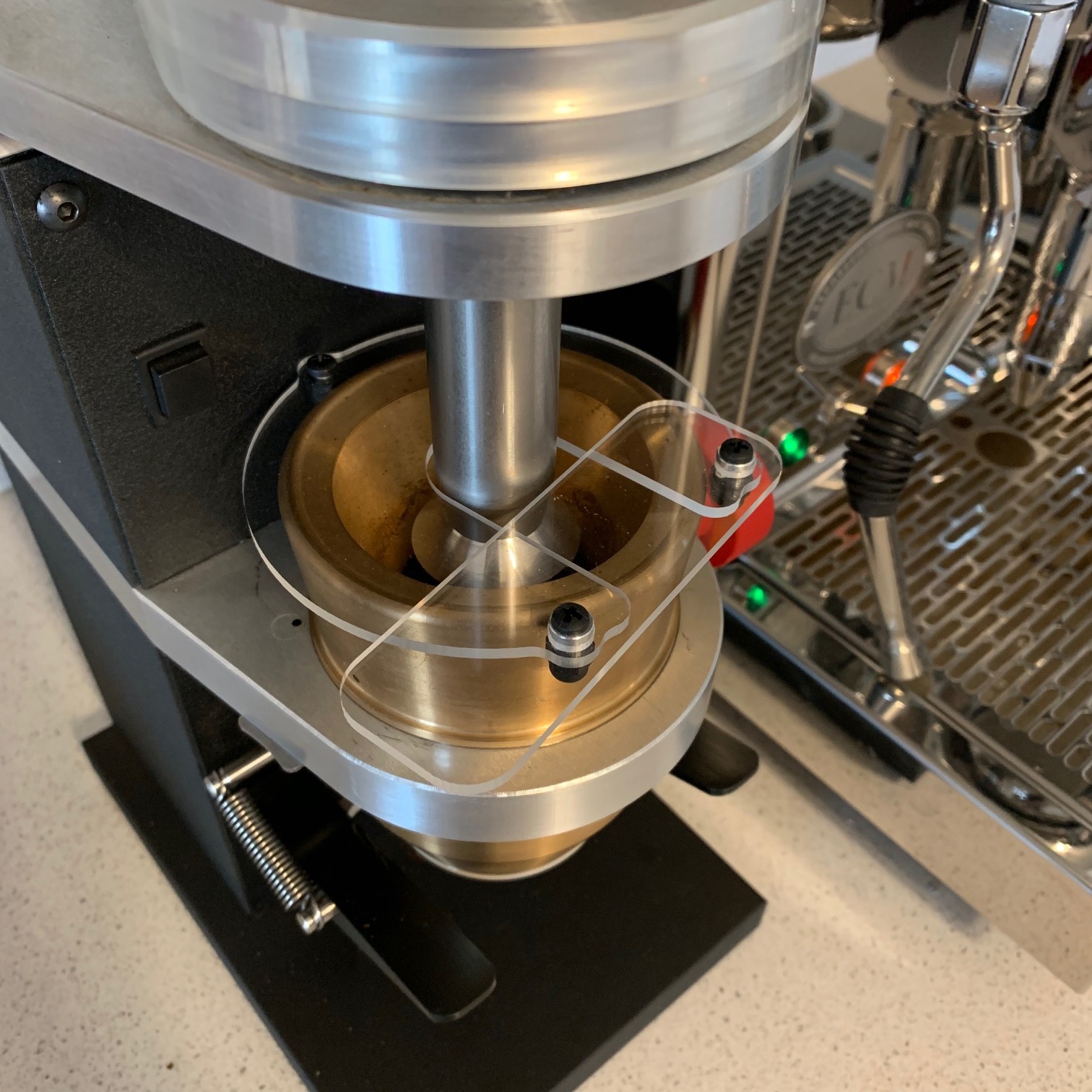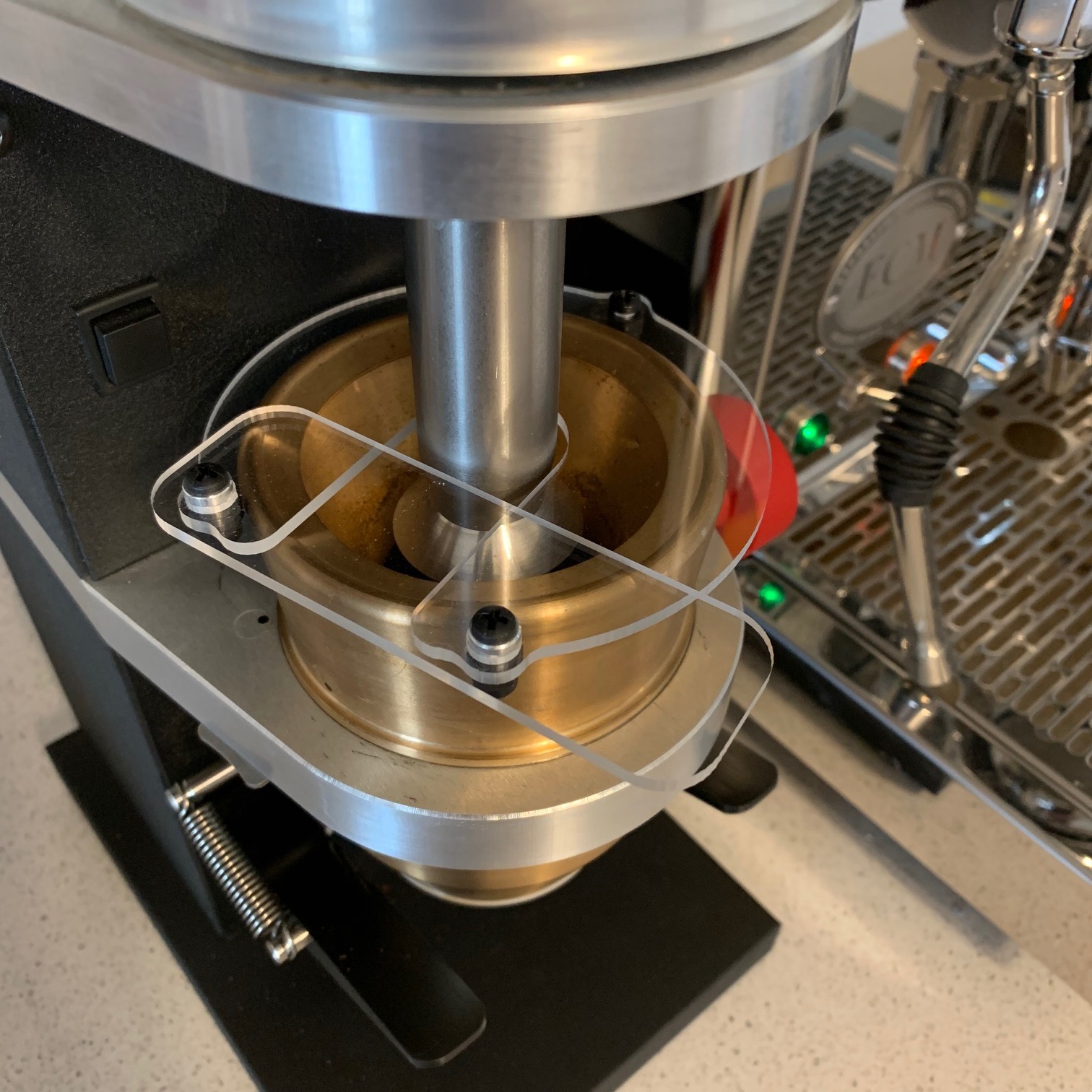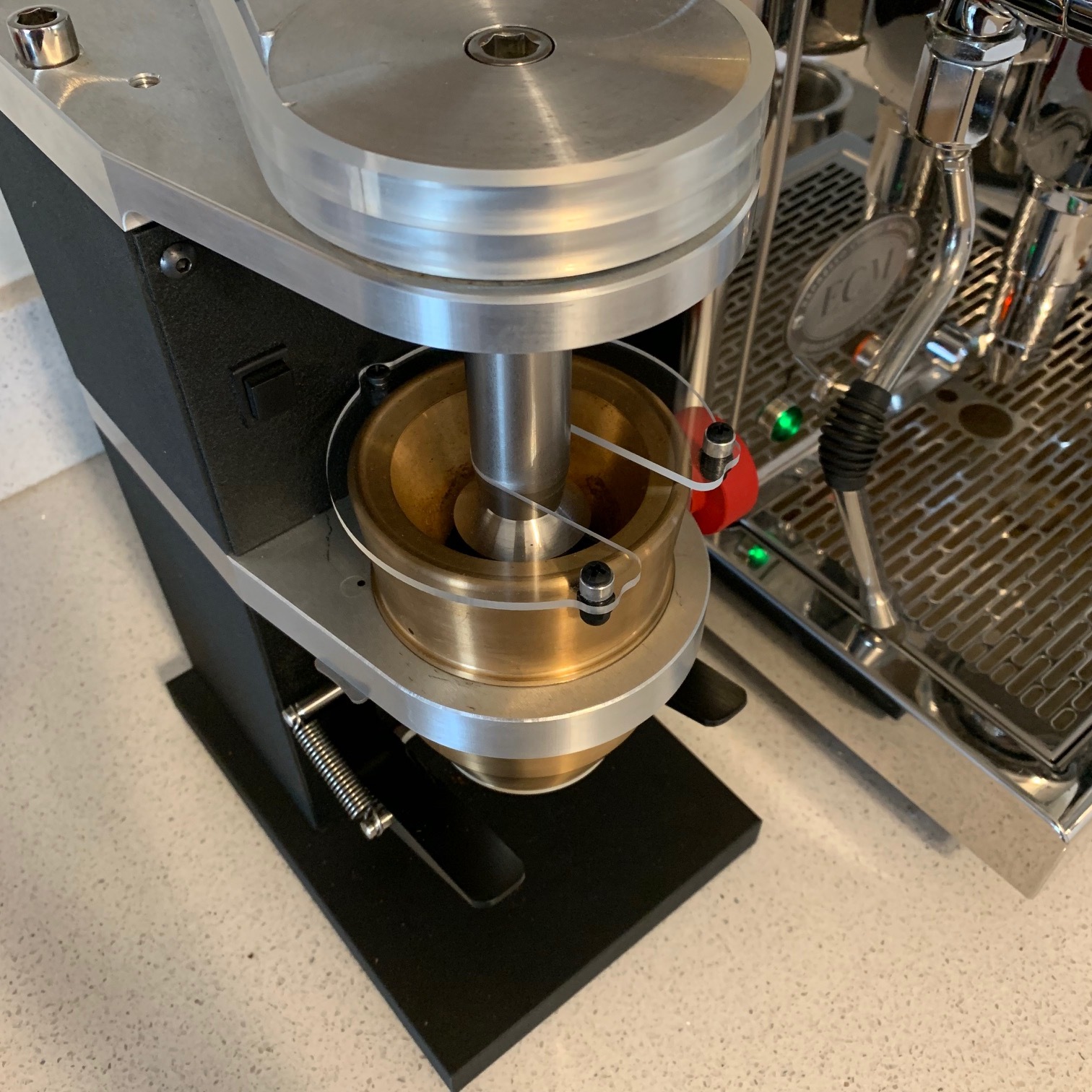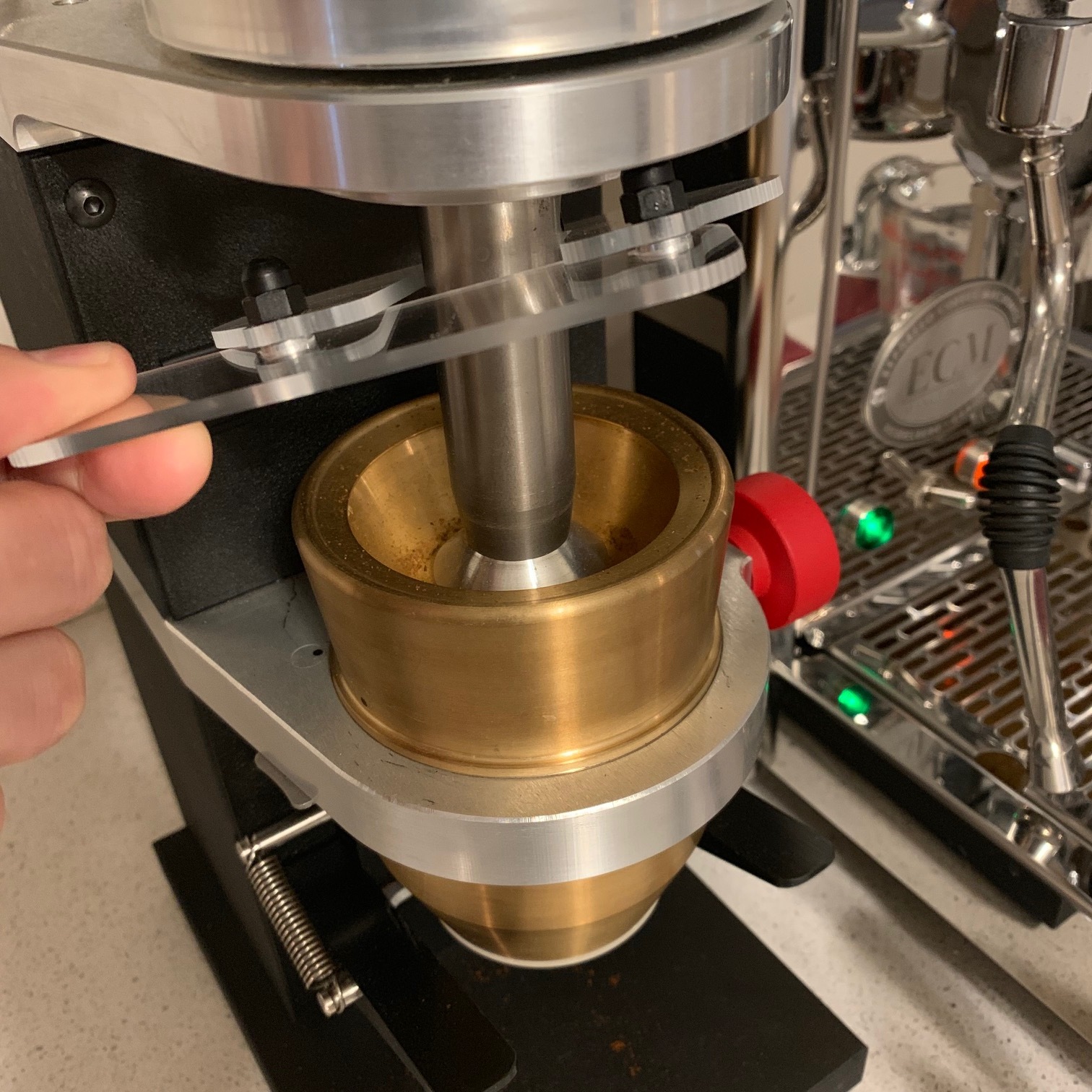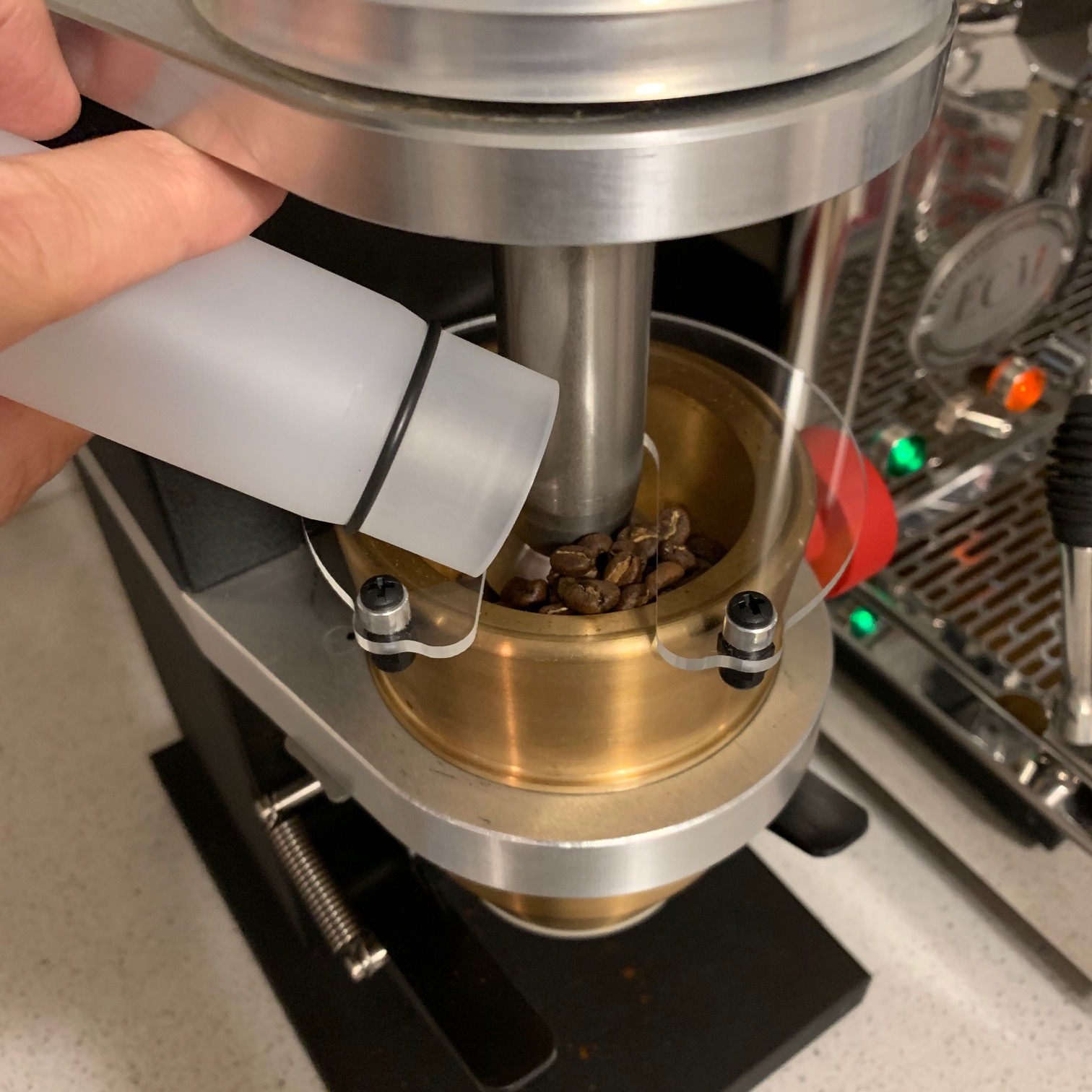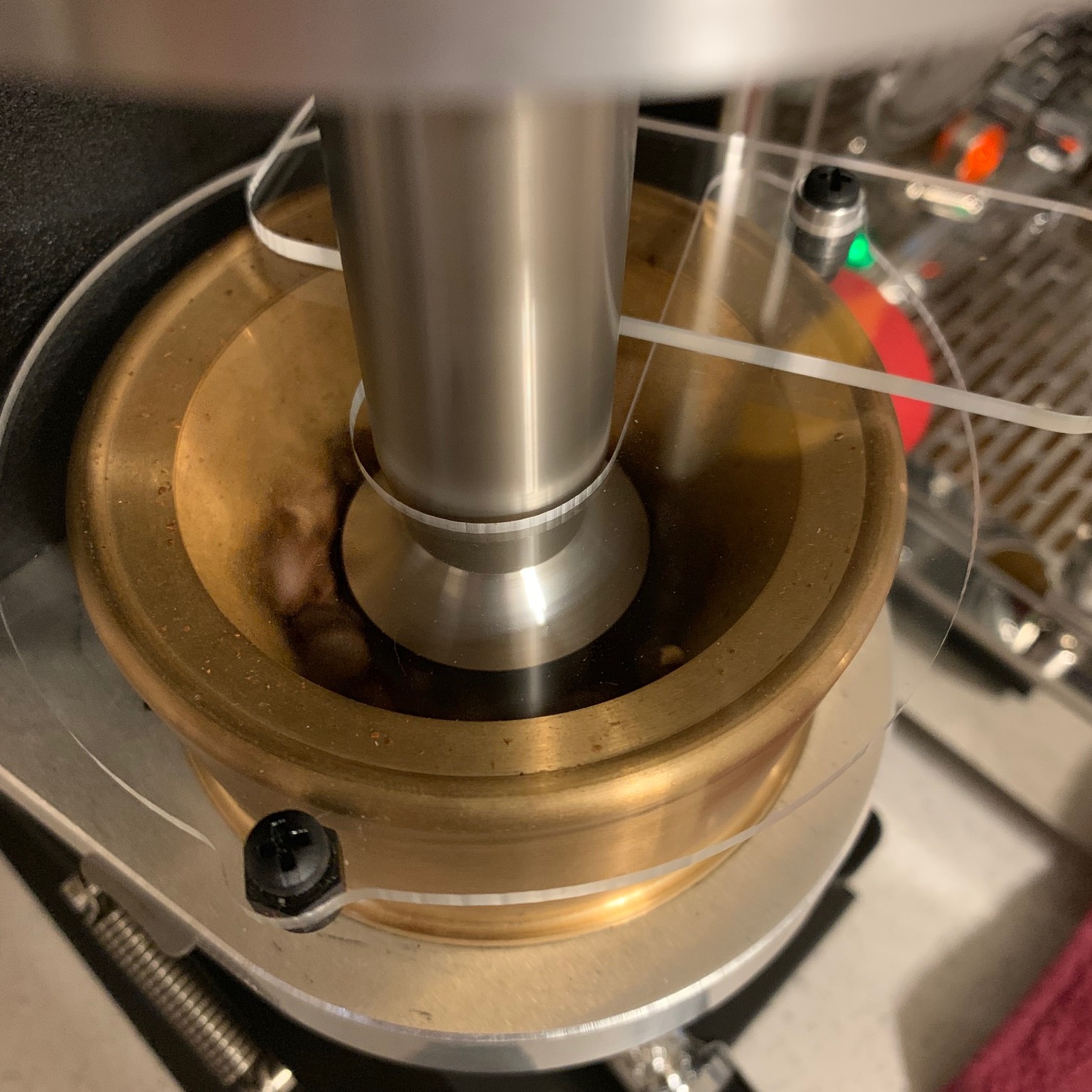In this early home user review, I’m not going to go into the in-depth history on Versalab and the M3, since that is largely covered in Part 1 of the M3 Review. I do think it is extremely pertinent to understand, however, since everything about the M3 and it’s 14 year existence (!) has culminated in the M4, bringing it up to modern standards.
The M3 and M4 Grinders being reviewed are pre-production “bench” or prototype models on loan to me from Versalab Inc. After completing my three part review of the M3 grinder I had a conversation with Versalab prior to returning the grinder regarding my feedback. From that conversation, I, personally, started to work with Versalab to develop a social media presence, record videos for their YouTube page, and conduct tests and provide feedback on what would eventually become the M4 grinder. I, personally, have been compensated for this work, and solely for this work. I (the writer and sole owner and content manager of meticulist.net) do not have a vested interest in Versalab, nor do I receive any compensation or benefit if a sale is generated. This working relationship has solely been conducted by me with Versalab, independent of “meticulist” and the views expressed on meticulist.net and any social media presence.
I clearly realize this renders this review and my findings to scrutiny of impartiality, and I accept that the same person that owns and operates this site is and writes this review is also working with Versalab. With that, take this review how you will. I have been completely open, honest, and transparent regarding my use and findings with the M3 and M4 grinders, and my relationship with Versalab, Inc., and I hope this information, regardless of how it’s viewed, can be helpful in providing the researching consumer and/or home barista with quality information, usage, findings, and another opinion with which to consider and utilize.
I know that when personally researching niche topics or products (as I often do), I seek out as much and many findings, usage, and valid opinions as possible when gathering, filtering, and later disseminating that information, and that is why meticulist exists, why I’m posting this long winded disclosure, and why I’m continuing to post this review. If you’ve come this far, let’s dive in…
Why a New Model?
The M3 is pretty much the original high-end single dose grinder, first introduced in 2005. Back then, the types of coffee being used and shots being pulled posed different demands on the grinder than we are seeing now in the age of lightly roasted single origins coffees ground extremely fine for pressure and flow profiling, and high yield, high extraction shots. The M3 was still largely capable of these demands, if you were very careful to pour the beans in slowly with the grinder running, and using a fresh belt to not experience any belt slippage. The upgrades the grinder receives in this latest model solve any potential weak areas and bring it up to today’s demands, and it performs extremely well under these demands. Given the six previous in-line changes and upgrades to the M3 over its fourteen year life, the most significant changes to date warranted a new model.
What is New?
The M3 was regarded by many (most?) as being one of the most attractive grinders on the market. I’m continually surprised by how many non-espresso gear junkies comment on how cool and beautiful it is, and because of that, not much has changed visually. The functionality and what “grinds the figurative gears” (sorry, had to use that bad pun) are significantly changed.
New Speed Control Board for the DC Motor
The most significant upgrade in this model is one you don’t really get to see. This new, smarter control board, is able to drive the DC motor harder and also vary the voltage drive to the motor to essentially eliminate belt slipping. The board is able to provide short bursts at increased power as well as throttle back voltage to control the speed of the belt as needed.
In my testing, I installed this new control board before any of the other upgrades, including the dual-belt pulley and the difference was game-changing compared to the M3. No longer did have I have to slowly and steadily pour lightly roasted coffees in while the motor was running. I have been able to:
completely fill the upper funnel before even starting the grinder
Aggressively dump full dose after full dose into the grinder with and without it running
Even turn the grinder off mid-grind and start it back up.
Essentially, I have been trying to see if I can get the belt to slip, with a myriad of very lightly roasted coffees from reputable roasters across the US, and I simply haven’t been able, and this was all at very fine espresso settings. This control board alone seems to have solved the main pain point with the M3. But just to be sure, the belt drive system was also changed…
New, larger Dual-Belt Pulley
The single 1/2” drive belt and pulley has been replaced with two 3/8” drive belts and a larger pulley, reportedly increasing torque capacity by 150%. Belt slipping with hard or lightly roasted coffees was the biggest weakness before, and this is the best physical and visible representation that that is no longer a concern. I wasn’t able to get the single 1/2” drive belt to slip with the new control board, but this seems to really shut the door on any concerns in that area. It’s hard to describe, but it sounds and feels as though the grinder is more powerful. The larger dual-belt pulley just seems to have a more solid or robust quality about it. Between this and the new control board, it’s been really nice to add the dose before turning the grinder on, and then putting the lid on for truly hands free operation.
These two changes are a real game changer for the grinder from my perspective. There simply isn’t any concern anymore or any limiting factors, the M4 has absolutely earned (back) its seat at the single dosing titan table.
New Multi-Position Acrylic Lid
Lid design is a tricky one because personal usage kind of dictates what makes a lid “good”. I was kind of apprehensive of this design at first because I thought that maybe it was over complicated, but after using it for several weeks there are a few things I really like. It can be positioned with the opening favoring the right or left side, depending on which hand and side you dose from, which is really nice. The opening size seems to be just right for dosing with a Lyn-Weber Bean Cellar, it’s not too big to allow too much popcorning and not too small that it’s challenging to add the dose. This base lid is works well for someone that might be grinding multiple shots in a row, since it largely controls porcorning while still allowing for fast dosing. It would have been nice if it was sort of depressed or sloping towards the opening to help guide any stray beans, but on the flip side that would have resulted in a bulkier, more complex lid.
The additional section to close the opening was not my favorite at first, it seemed overly complicated to someone that had been using a to-go container lid with a cut out similar to the acrylic base plate up until now. However, now that the full dose can be added prior to starting the grinder, this works really well. The rectangular “door” is over-sized as such that if you mount the assembly with the “handle” or cross member underneath the lid, you can lift the whole lid assembly up and expose the entire funnel for dosing. If you’re not using a narrow container for dosing like the Bean Cellars, this provides more flexibility.
Lid design is pretty personal based on usage, and what you’re using for dosing, and I do feel like this design provides a lot of flexibility for a variety of usage types. I thought the acrylic was a bit basic at first, however I like that the clean, minimalist approach matches the grinder’s style, and it kind of disappears. Plus I find myself kind of mesmerized and it’s fun to be able to watch the beans being ground. I do think a matching red or rich walnut lid might look really cool as well, but that give people something to mod and personalize.
SSP Flat Burr Set
The M4 receives SSP brand Flat Burrs standard. SSP has been regarded as one of the best burr manufacturers around, with many other “Titan” level grinders also opting for SSP branded burr sets. The 68mm flat burr set on the M4 grinder retains the same geometry and design of the original flat burr set, but accomplishes even tighter tolerances, further tightening the precision of the grinder. Because the geometry is unchanged, I haven’t noticed a difference in flavor or TDS and extraction yields.
Quality control and tolerances are something Versalab is very passionate about, and the conical burr set has also seen increases in precision of the parallelism to further tighten tolerances. Again, this is not something the end user should really see or experience, but an improvement made to ensure precision and execution in operation. I have still been able to achieve very high extraction yields and grinder operation is largely unchanged, but it’s nice to know that the very best components available are being used.
What’s the Verdict?
Unexpectedly, I have found this the most difficult question to answer so far. Not because the grinder isn’t better, it is. But because the M3 was already a pretty good grinder that just had some weak points, like belt slipping. The M4 doesn’t radically change the already unique way Versalab’s grinders work, it just makes everything better, solving any weak spots of the M3. Maybe it’s easier explained that the M3 was great, when it worked. But not everyone is going to have the patience to slowly and carefully pour the beans in to avoid belt slipping, clean, maintain, and change the belt periodically, and want to make their own lid to avoid popcorning.
Because the M4 solves all of the weak areas of the M3, it takes an already good grinder, and the qualities that made it good as described in my previous reviews, and makes it great. The workflow has to be one of the simplest and most straight forward of any of the top-of-class or “Titan” level single dosing espresso grinders, it looks great, and makes fantastic coffee.
I love that the M4 doesn’t require any RDT or spritizing the dose, dose transferring, funnels, redistribution or WDT, or grooming tools, and that the portafilter holder is so simple and good. I can simply add the dose, close the lid and turn it on while I’m getting everything else ready, and it’s still just a few vertical taps to settle the dose, tamp, and go. There’s no more fear of belt slipping, there’s no more popcorning, and everything continues to work exceptionally well otherwise. As far as Titan grinders go, I’m not sure what more you would need.
Using the notoriously tricky Intelligentsia Honey Badger espresso blend, I have been able to routinely hit extraction yield percentages over 23%. (18.0g in an 18g VST Basket, 48.7g out, TDS: 8.69%, EY: 23.51%, OR the shot parameters in the video to the right, for example.) Using Dragonfly Coffee Roaster’s Leam Hammer saw extraction yields in excess of 24.7%. I’m not one that get too caught up in the stats, since it’s taste that’s most important to me, but if objective measurement is the best way to compare, the M4 doesn’t fall short. Versalab attributes it to the unique conical / flat burr hybrid that creates a grinds path equivalent to a 96mm+ flat burr grinder.
I personally find that it seems to provide a nice balance of texture and mouthfeel and clarity. When previously comparing my Compak K10PB, which is a large conical grinder to the Kafatek Monolith Flat, the way the flavors were presented as well as the mouthfeel was the biggest difference using the same coffee. The Versalab grinders seem to preserve the more viscous mouthfeel from the conical burrs, while still providing plenty of clarity, at least for my palate.
I often get asked which grinder is “best” in this category. And really, they’re all excellent, as they should be at this price point. In my opinion, what it really boils down to is:
Which best suits your workflow preferences? This is the single biggest factor or variable between the various top-tier single dosing grinders, in my opinion.
(There is quite a bit of debate that some feel conical burrs are not capable of hitting the highest range of extraction yields, and if you’re active in that debate, that would certainly be a differentiating factor, but not one I personally choose to emphasize.)
Which is most attractive to you? This sounds kind of crazy, but they all perform well, so this is certainly a criteria where they differ.
Which can you actually get? This also sounds silly, but I’ve heard from a few people that state they simply can’t get some of the other options.
I would gladly take any of the grinders in the category, and I’m not sure what I’ll do when the day comes to send the M4 back to Versalab, it’s going to be tough to go back to the doser thwacking of the Compak K10PB. But based on the questions I outlined above, the M4 looks pretty good with it’s straight forward workflow, great looks on the bar, and availability.
From my initial four weeks using the complete M4, it’s very difficult to identify a weak area or something that I would improve. Any issue from the M3 has been addressed, and it now exists as a completely solid, completely capable, complete package. This may sound very sided since I do work with Versalab as disclosed above. But the flip side to that is just that - that every little thing I told them I would potentially want to change, see different, or concern I had is now solved as far as I can tell in four plus weeks of daily use. The original “Titan” class or top tier single dose grinder has been reborn to unapologetic-ally continue forward as such.
The M4 grinder starts at $2,970, including the SSP burrs and funnel lid and $3,165 as shown with the portafilter holder. Click through to visit Versalab.com for more info and ordering. Thanks to Versalab, Inc. for providing me the opportunity to test the grinder. If you have any questions, please comment below and I will do my best to provide more information. Thanks for reading.
